
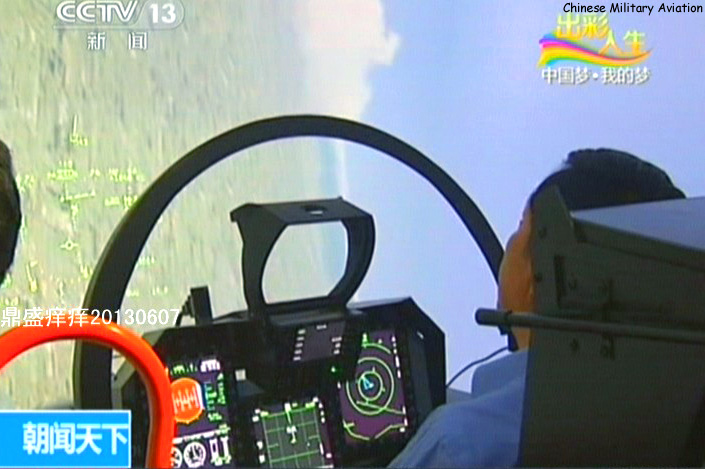

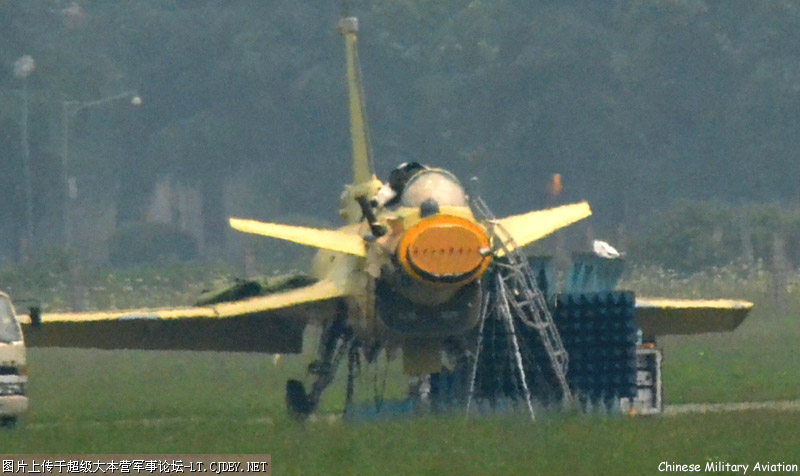
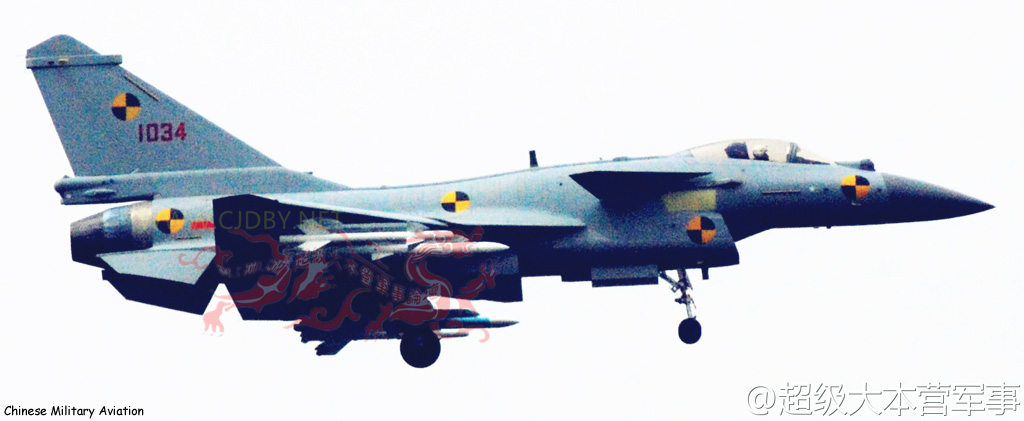
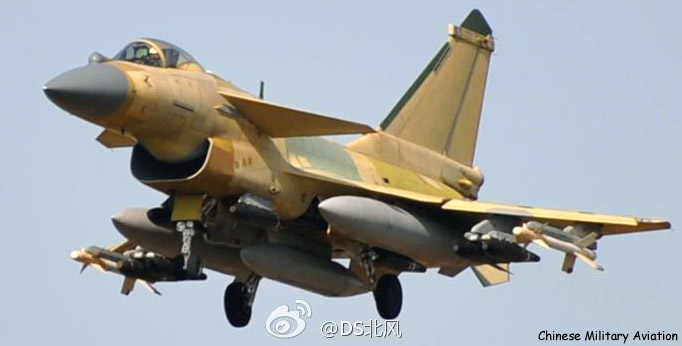

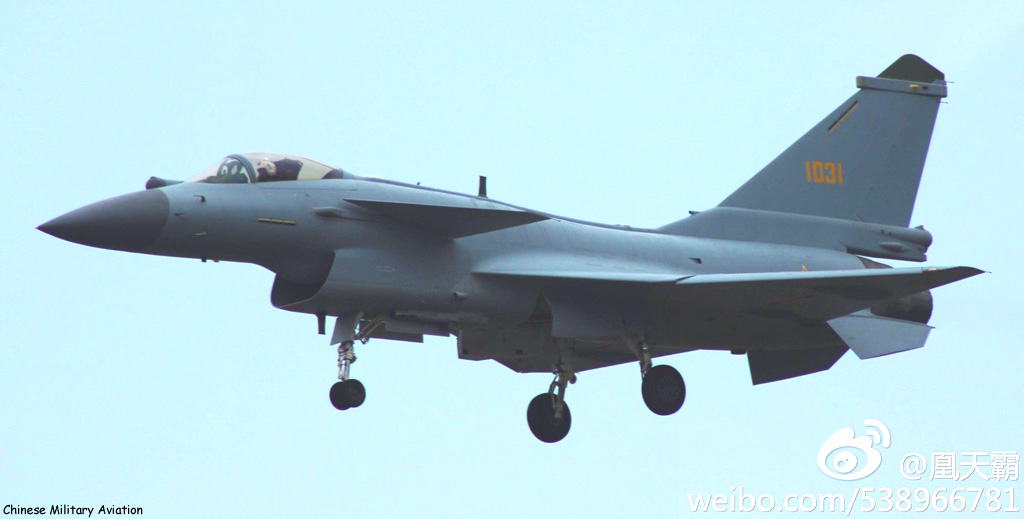
The latest 1035 prototype of the J-10B (K/JJ10B?) was photographed at CAC airfield in July 2011, revealing the indigenous WS-10B (?) turbofan engine. This much improved variant made its maiden flight on December 23, 2008, powered by a Russian AL-31FN engine (1031 prototype). The improvements include a DSI/bump engine inlet which not only cuts weight but also reduces RCS, after a similar design was first tested onboard FC-1/JF-17. The aircraft also features a J-11B style IRST/LR, a JF-17 style glass cockpit with a wide-angle holographic HUD. IRST allows passive detection of enemy aircraft, making J-10B more stealthy in combat. Its nose appears flatter too, similar to that of American F-16, housing fire-control radar which could be an X-band AESA developed by the 14th Institute (track 10, engage 4 simultaneously), the first of such type ever being developed for a Chinese fighter aircraft, giving J-10B a stronger multi-target engagement and ECCM capability. There were also rumors that a PESA radar developed by the 607 Institute could be installed but this has not been confirmed. An ECM antenna can also be seen right in front of the canard foreplane on 1035. Two large pods housing testing equipments were attached under the wings. The tip of vertical tailfin was redesigned as well, featuring a large fairing containing communication and ECM antennas, which resembles that of French Mirage 2000. A rear facing MAWS sensor can be seen underneath the parachute boom. A similar system was tested onboard FC-1/JF-17. RAM coating is also expected in certain areas such as engine inlet and wing leading edges to reduce RCS. The aircraft may be fitted with CFTs in the future to further extend its range. All these improvements suggest that J-10B is equipped with a new generation of integrated electronic system, ranging from radar to EW system. Its mission may be changed from air-superiority to multi-role, such as CAS or EW. For air-superiority mission, normally 6 AAMs (PL-12x4 + PL-8x2, PL-12s are carried underneath the twin-rail launch pylon) can be carried. For CAS mission, normally 2 KD-88 AGMs or LS-500J LGBs can be carried. In addition, the aircraft is expected to be powered eventually by a WS-10B turbofan. Overall J-10B is thought to be comparable to American F-16E/Block 60. The 03 prototype (1033) first flew in August 2009, with the pitot tube removed from the nose tip. Both 1031 & 1034 prototypes have been tested at CFTE. J-10B is likely to serve as a testbed for various advanced technologies adopted by the 4th generation J-20 currently under development at CAC thus may not enter the service in large quantity with PLAAF. The production of J-10B finally started in 2013 after some delay, due to the quality issues of WS-10B. It was speculated that the first batch of production J-10Bs would be powered by Russian AL-31FN engine and would enter the service with PLAAF 44th Division in late 2013. Recent images (March 2013) indicated that the 1031 prototype has been modified with ECM antennas installed ahead of the canard foreplanes similar to those onboard 1035, which represents the final configuration before the production. The latest rumor (June 2013) claimed that a further upgraded semi-stealth multi-role variant (J-10C?) with CFT and AG-enhanced electronics was rumored to be under development. First flight is expected in late 2013.



